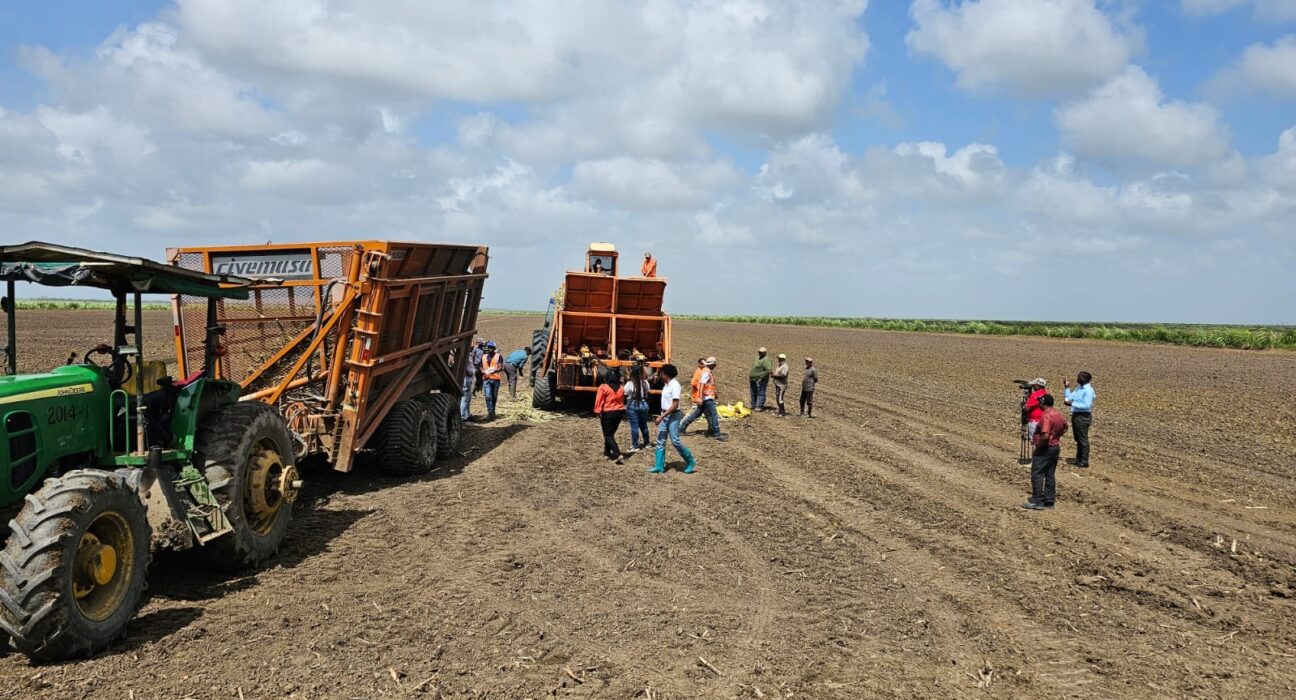By Royan Abrams
In a significant stride towards modernizing the sugar industry, mechanized planting of sugar canes has commenced at the Albion Estate, marking a pivotal moment in Guyana’s agricultural landscape.
The government’s commitment to enhancing efficiency and productivity in the sugar belt is underscored by substantial investments in cutting-edge equipment aimed at addressing labor shortages and optimizing production.
The latest addition to the arsenal is a state-of-the-art mechanical planter, operational at the Albion Estate, capable of planting over 20 hectares of land within a mere 12 hours.
During a media tour of the fields under cultivation with the mechanical planter, Ravindra Persaud, Head of the Agriculture Research Center, highlighted the transformative potential of this innovative technique.
Persaud emphasized that mechanized planting, facilitated through a partnership with the private sector, notably Japarts, promises remarkable efficiency gains.
The machine, capable of marking, planting, and covering simultaneously, completes planting two rows in just three minutes and fifteen seconds, revolutionizing the traditional planting process.
Persaud clarified that mechanized planting is not intended to replace manual labor but rather to complement existing practices and ensure a higher volume of canes reach the factory during each crop cycle.
This strategic integration of mechanized techniques is poised to bolster sugar production significantly while reducing operational costs.
In a parallel initiative, the Guyana Sugar Corporation is spearheading an ambitious endeavor to convert 5,555 hectares of land for mechanical harvesting through a Public Private Partnership.
To expedite this transformative undertaking, twelve private contractors have been enlisted across the estates, signifying a concerted effort to modernize and revitalize the sugar industry.
This venture into mechanized planting and harvesting heralds a new era of efficiency and sustainability in Guyana’s sugar sector, reaffirming its pivotal role in the nation’s economic landscape.

